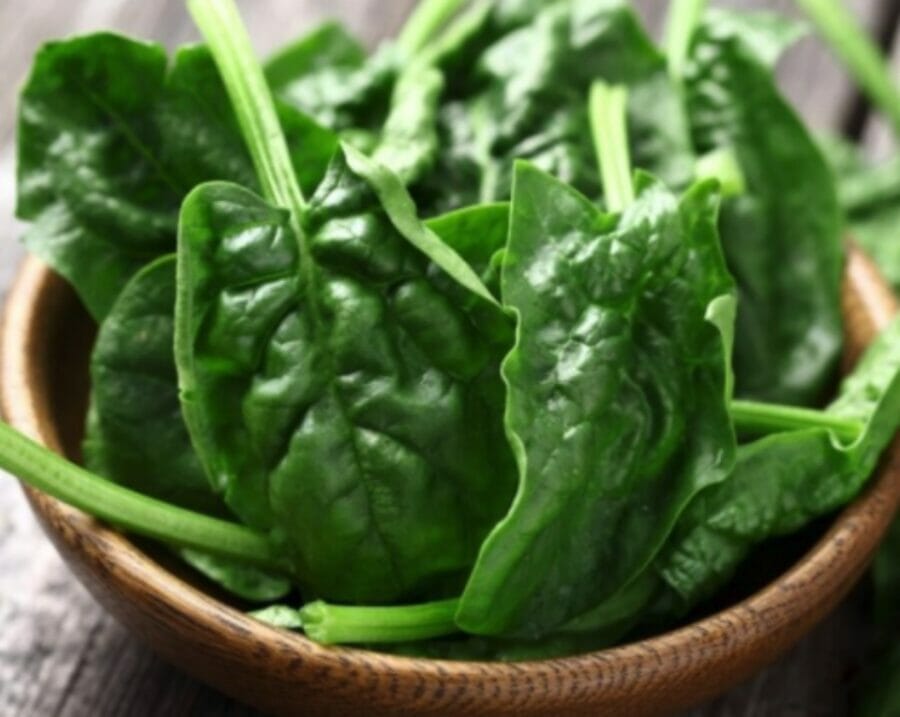![]()
Naturopath explains what to eat to combat the symptoms of PMS

Tired of feeling down with PMS? Sick of the ups and downs? There are simple lifestyle changes that you can make to ease some of the monthly madness.
Premenstrual syndrome, or PMS, refers to the physical and emotional symptoms that many women experience in the lead-up to a period (menstruation). PMS has a wide variety of signs and symptoms, including mood swings, tender breasts, food cravings, fatigue, irritability and depression. It’s estimated that as many as 3 of every 4 menstruating women have experienced some form of premenstrual syndrome.
Wellness expert and Naturopath Sarah McLachlan discusses this issue on a recent podcast in the Wellness app, specifically about which therapeutic foods can help us tackle the symptoms of PMS naturally.

How are foods connected to PMS ?
When we think about food and its use as medicine we are acknowledging all the wonderful compounds that are found within the foods we are consuming – vitamins, minerals, and the plant colours that all work to help enhance our own hormones, progesterone and our neurotransmitters. These in turn help to soothe and calm us, and stabilise and metabolise oestrogen – which reduces inflammation. This is key in reducing PMS.
What part does Inflammation in our body play in PMS?
Inflammation is part of our immune response. We definitely want it around if for example you have cut yourself or have a bacterial infection, a sprain or a cold, but we don’t want it around long term at a low level because that’s when it’s going to cause havoc in the body and upset our hormone balance and communication lines. It can enhance pain and the bodies perception of pain and ultimately alter your hormone levels and impact how you experience your period and the lead up to it.

What foods to avoid?
Sometimes foods are considered inflammatory because they increase some of our immune cells such as histamine and too many sugary foods can increase inflammation from an imbalance of glucose levels.
Preservatives, flavours and additives can usually be found in these types of foods also and they are foreign to
our bodies.

Wheat and cows dairy are also inflammatory in the body in terms of the proteins and the hormones that are naturally occurring in cows dairy.
Be aware of Food Sensitivities
Your body gives you clues on what agrees with you and what does not and this can be what triggers the inflammatory response as 80% of our immune cells are hanging around our intestines waiting for action or to be stimulated by a foreign invader, because it’s the easiest route into our body. It has a bit impact on our
overall health, our mental health and our hormonal health.
So if there’s a food you know doesn’t agree with you and you’re struggling with your mood or PMS perhaps it’s time to consider cutting things out of your diet or making some small changes.
Sensitivities can start with a small gurgly tummy or a rash and escalate pretty quickly to major pains. If you don’t listen to your body and the early warning signs your body will start screaming at you. PMS is one of those giant red flags but its good to chip away before you get to that point.
How much are you eating?
It’s also good to look at the volume of foods you are eating. It’s always good to rotate the foods you are eating throughout your day and be mindful of not eating too much of the same thing, or same food groups. If you are wheat and dairy heavy in your diet or eating highly processed foods you could be missing an opportunity to get a good serve of magnesium through leafy greens, which is great for PMS.
Magnesium helps reduce cramps, headaches and even chocolate cravings.

So what else can we consider to be therapeutic foods for PMS?
As mentioned we have our master relaxation mineral – magnesium, which is like gold for the busy modern day mum in helping to alleviate the stress response. It also aids in progesterone production, which isn’t just reproduction in pregnancy it’s a nervous system tonic. It soothes and calms and helps us sleep and benefits
hair, skin and nails.
As well as leafy greens you get magnesium through nuts and seeds and cacao. Nuts and seeds are particularly good for PMS as they are full of essential fatty acids, magnesium, B6 and oestrogen’s.
Phytoestrogen rich foods are also great for PMS. Phyto meaning plant oestrogen’s, and they are a lot weaker in our bodies than oestrogen’s.
Powerful foods to combat flushes and sweats
These foods are all beneficial to help soften oestrogen levels and resulting symptoms.
- Flaxseeds
- Alfalfa sprouts
- Legumes
- Sesame seeds
- Tahini
- Tempeh
- Tofu
- Red clover
Fibre is great for gut health and hormone levels

Gut health is so important and so comes into play the importance of eating your fibrous veggies and not the starchy ones to help your friendly microbes flourish! They bind to the oestrogen metabolites so when our liver is processing our hormones, it packages them up ready to get out of the body and sends them back to your intestines for elimination. If they sit too long in your intestines if you’re not using your bowels every day the bacteria that chops apart the compound that’s bound to the oestrogen can go back into your bloodstream and cause a shift if the levels raise too much. Supporting gut health and being regular is super important.
Our phytoestrogen and fibrous veggie foods are the best way of doing this naturally and getting oestrogen out when we are ready to get rid of it.
Why not harness what we eat to help balance our bodies and our minds?
So what would an ideal day look like on a plate if we were really trying to target a therapeutic approach for PMS?
A balanced plate is the best way to look at it. We need a good mix of protein, healthy fats and a bit of carb – whether this comes from veg, or a mix of veg and wholegrains. Don’t skip meals! We need at least three meals a day and eat when you’re hungry as it’s really stressful to your body when you don’t.
Breakfast
You may love a smoothie or a smoothie bowl for breakfast and try opt for a goat or sheep’s yoghurt if you can because it’s less inflammatory. Or some nuts and seeds with some fruit which is a great option.

Try this recipe for Blueberry, Oat Banana Smoothie
Chop up some almonds and sunflower seeds and grate some apple with some cinnamon and even some carrot and have it on a rye or a gluten free cracker. It’s really tasty and satisfying.
Lunch
An ideal scenario for lunch would be leftovers because it’s easy! Try and always have some smoked chicken or salmon handy in the fridge. Even quality tin salmon and then add some veg and some alfalfa. Use some brassica veg such as rocket because they help support your liver in processing hormones.
A little bit of seaweed also gives you a boost of iodine which is great particularly if you have some breast pain or tenderness associated with PMS. Salmon and seafood is great too as it’s also rich in iodine. For a dressing some flaxseed oil and balsamic vinegar or apple cider vinegar and some garlic with a bit of salt and herbs is a winning combo.

Try this Turmeric Cauliflower with Grilled Salmon
Dinner
If you are in that week lead up to your period choose those warm, nutrient rich meals. The slow cooker or casserole can be a great option and the work is done in terms of digestion plus its easy and comforting. A soup on a chicken or beef broth base is a perfect choice. Add lots of veg and Asian flavours are a lovely addition.
You can easily incorporate ginger and turmeric there, which are anti-inflammatory and support your liver. Garlic and onion and sulphur foods also support the liver and help it do its job in eliminating waste and hormones. Add some chickpeas or lentils and you have a very balanced PMS fighting, hearty meal.
Make some Bliss Balls!
If you know your period is coming up and you know you’re going to have some sweet cravings is to make up some bliss balls in advance. They contain fibre, magnesium, healthy fats, phytoestrogens and you can add cacao and get that chocolately fix.

Try these Bliss Balls Drizzled in Dark Chocolate
Takeaway tips
- Listen to your body when it comes to recognising foods that don’t agree with us
- Eat a balanced diet and don’t skip meals or get hungry
- Avoid wheat and cows dairy where possible
- hit the fibrous veggies and phytoestrogen rich foods
- Have some bliss balls at the ready for the PMS and period
For more Functional Food Recipes AND access to the full podcast, download the Wellness App

The Healthy Mummy Wellness app is built to support mums’ mental, physical and social wellbeing. We have expert advice to help mums makeover their minds, transform their mood, manage their hormones, sleep better and engage with their family. You can listen to podcasts, read blogs, work out with our trainers and find healthy, family-friendly recipes from the palm of your hand.
Get the Healthy Mummy Wellness App here


